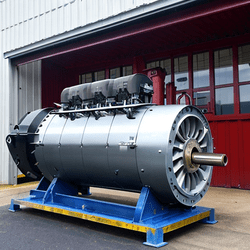What is it?
Power quality analysis checks the power supply for safety and efficiency.
Years of experience?
Lorem ipsum dolor sit amet, consectetur adipiscing elit. Ut elit tellus, luctus
Terms of service?
Lorem ipsum dolor sit amet, consectetur adipiscing elit. Ut elit tellus,
Electrical Standards
LRED
LRED
LRED
LRED
LRED
LRED
LRED
LRED
LRED
LRED
LETS DISCOVER MORE

CareLabs provides Japanese businesses with Motor start research and analysis services. The major goal of our motor start analysis service is to discover what odd events occur when a large motor is started. In addition to ensuring that the electric motor is correctly connected to the line voltage, there are additional factors to take into account prior to starting an electric motor. For instance, nuisance tripping, high nominal currents, and flickering or fading lights are all indicators of a malfunctioning power supply. CareLabs will assign qualified experts to your area to gather both current and historical motor installation data. Then, using the manufacturer’s data and information, calculations are performed to forecast future events and develop mitigation methods.

Both static and dynamic simulations may be used to investigate motor starting operations. We concentrate mostly on research that aims to replicate motor starting conditions, such as:
- The measured starting impedance of the electric motor is modelled in order to arrive at the load flow solution.
- The short-circuit approach is used to calculate the current under pre-fault short circuit conditions, whereas the voltage drop method is used to calculate the starting current in a motor when it is turned on.
- When the electric motor circuit and load-torque characteristics are adequately modelled, the dynamic model of the electric motor may be employed in a standard transient stability method to evaluate the effect of motor starting.
- In the lack of a comprehensive dynamic model of the electric motor, simulations of transient stability may be utilized.

Japan Must Do a Motor Start Analysis:
The prevalence of motors in modern industrial systems is on the rise, and the size of electric motors is rising dramatically. If you turn on a large motor that is linked to the power line, it might cause major difficulties for the electric motor, any nearby loads, and even far-away buses. To start an electric motor, at least 80% of the rated voltage must be present at the motor terminal. Since the square of a motor’s terminal voltage is directly proportional to its load torque, voltage difference has an immediate impact on the load torque characteristic of the motor.
If the voltage loss is significant, the machines’ load may exceed their “breakdown torque,” causing them to slow or halt. Other types of loads, such as electrical equipment, sensitive control devices, lighting loads, etc., are also affected by the voltage drop. In addition, a high beginning current influences terminal voltage, necessitating an increase in current for all systems that service a steady load. Broken low voltage relays have also been observed.

When Is a Motor Start Analysis Necessary?
- Before or during the procurement of a massive engine.
- A backup generator must be added if there is no generator, and the motor rating exceeds 30 percent of the supply transformer’s base KVA rating.
- If the generator is the only power source for the system and the motor rating exceeds 10 to 15 percent of the generator’s KVA rating, the generator should be replaced.
- If a significant number of motors start simultaneously during an industrial process, it may be required to conduct a motor start study.
- Since smaller power systems often have less power, starting a motor with a high-power output exacerbates voltage drop difficulties. Understanding the output of tiny systems with generators may be aided by examining how motors start.

Analysis of Motor Start's Pros and Cons:
Determine how an engine starts. Select a motor or starting method with the optimal speed-torque characteristics for the task at hand. To avoid exceeding the torque limitations of the equipment, certain loads must be accelerated in a controlled manner. By doing a motor start test, you may check the performance of the motor’s shaft at any moment. Consequently, it aids in determining the maximum torque the equipment can withstand.
Motor beginning study is required to determine how starting affects the machine’s voltage and whether or not an electric motor can start and gain speed swiftly. CareLabs provides motor start tests done by trained professionals to assist you in determining the performance of your electric motor. We provide motor start analysis services in Tokyo, Yokohama, Osaka, and Kyoto among other important cities. Please contact us as soon as possible if you would like to organize a motor starting study or receive a price.
RELATED SERVICES











